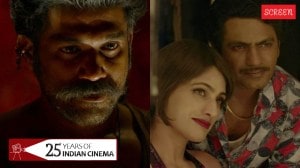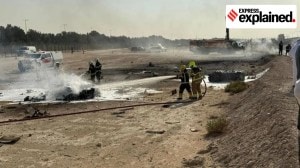Gurus give up
Artists are slowly moving away from what was once a creative catalyst—teaching

Over half-a-decade of teaching at the Pune Art Institute, artist Buwa Shete is about to quit his job. The old, tired syllabus disappoints him and he’s tired of fighting to get computers for his students. “There is less fun left in working as a teacher. I would like to concentrate more on my work,” he says. Shete is not alone. In art schools across the country, many senior artists are giving up on teaching as they either choose to concentrate on tapping the booming art mart or are pushed out because of political reasons. In the last few years, Natraj Sharma and Rini Dhumal have left their teaching positions at MS University, Baroda. And barring Paul Kohli, JJ School of Art has few practising artists in their faculty.
This is a significant shift from the time when masters like Rabindranath Tagore, B.B. Mukherjee, K.C.S. Panicker and Prabhakar Kolte taught and painted at universities and set in motion new movements of thought. But old school idealism is making way for the practicality of a market, driven by globalised and politicised art. Says Gulammohammed Sheikh, who along with K.G. Subramanyan, gave direction to the narrative school of art in MS University, “In our time, we were concerned about having freedom from market forces which is why we earned our living by teaching. Today with prices escalating, many painters no longer have the time or inclination to teach,” says Sheikh.
Market forces are not the only factor discouraging artists from being part of campuses. It appears that universities no longer provide the freedom to experiment that they once did. A rather extreme example is the recent encroachment of right-wing activists on the MSU’s Fine Arts Faculty final examination, where Chandramohan’s evaluation was disrupted. As Shivaji Panikkar, the acting dean who was suspended over the row, puts it, “Indian contemporary art has not been taught at schools and universities the way it has in the West, which is why, what an artists says and does often comes as a shock to the lay audience. The gap needs to be bridged and clamping down on the freedom of artists to express is not the answer,” he says.
Painters like Prabhakar Kolte, erstwhile faculty member at the Sir J J School of Art do believe in the freedom of expression but are also uncomfortable with activism and political posturing in art. “My language and enquiry as an art is informed by pure aesthetics. If I was interested in politics, I would have been a politician. If I wanted to take an activist stand, I would be one. As an artist, my concerns are about the purity of line and colour,” says the reclusive painter who works out of his studio at Kandivili and rarely ventures out.
But it’s not as if the synergy between artists and students has completely dried out. There seems to be, on the other hand, a reorientation of older methods of communication. Many artists like Jitish Kallat, Jehangir Sabavala and even Bose Krishnamachari serve as visiting lecturers at their alma maters besides other institutes. “It is possible that I would have still found time to teach at the J J School of Art, but I fell out with the authorities because of my criticism of a Khoj workshop that was held. After several confrontations on various issues, there was no question of staying on,” explains Bose, whose reasons for leaving were less to do with economics and more with ideology.
Sabavala, who held a few workshops and film screenings at J J, points out that he is not entirely comfortable with the whole guru-shishya parampara, “I enjoy a good stimulating discussion about art with younger painters and those who are still studying, but I think it would be wrong to impose one’s style on an artist. It’s important that they find their own path and we as senior artists can merely facilitate that journey.”
Other spaces like the Mumbai based NGO Majlis and the artists’ collective Open Circle have made endeavours to engage with students from schools and colleges outside the curriculum. While Madhushree Dutta organised a series of workshops with students and art practitioners, filmmakers and writers like Baiju Parthan, Patel, Arun Khoppkar and Urvashi Butalia, Open Circle currently runs workshops with schools like Ecol Mondial in Mumbai. Sharmila Samant of Open Circle believes that workshops may well be the way ahead in the absence of any radical change in curriculum.
Gieve Patel, who recently came out with a poetry book, the result of a 10-year annual workshop with the students of Rishi Valley, agrees that senior artists are still around to inspire the next generation. “One cannot teach poetry or painting, but merely aid the discovery of art or poetry within an individual,” says Patel.
That’s a process that continues—on and off the campuses.



- 01
- 02
- 03
- 04
- 05




























